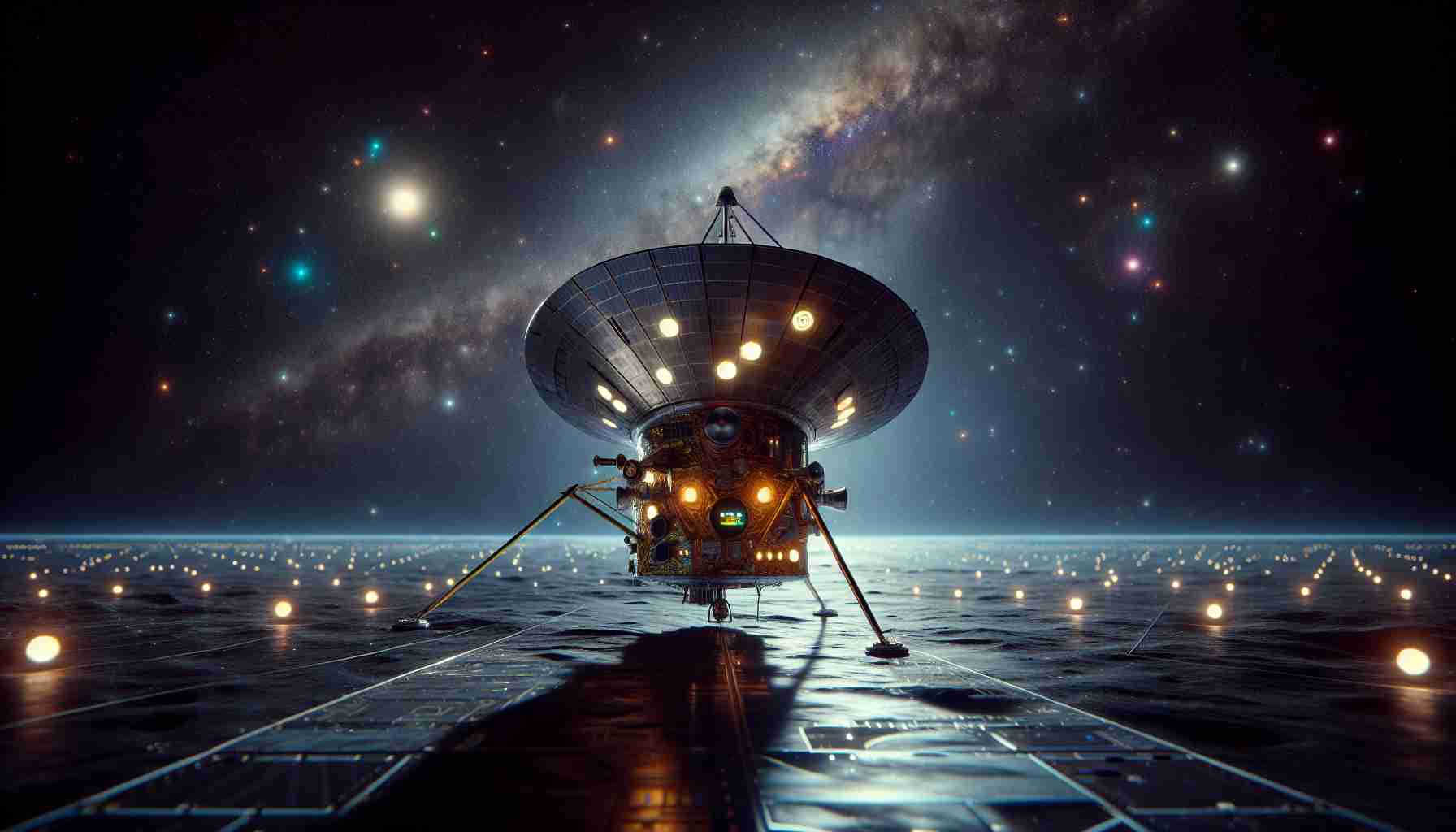The Journey of Voyager 1
Launched on September 5, 1977, NASA’s Voyager 1 stands as a testament to human ingenuity in space exploration. Intended to investigate the distant planets of Jupiter, Saturn, Uranus, and Neptune, this spacecraft has achieved the remarkable feat of becoming the farthest human-made object from Earth, now traveling approximately 9.3 billion miles. In 2012, it made headlines by entering interstellar space, earning the title of the first human-made object to reach this uncharted territory.
https://youtube.com/watch?v=XURvr8Usd-o
Communication Challenges
Voyager 1 has encountered several communication obstacles throughout its expansive journey. Recently, one of its two radio transmitters, the X-band transmitter, was turned off, raising serious concerns about the potential for a prolonged communication failure. With only four remaining scientific instruments capable of transmitting valuable data, maintaining contact is crucial for ongoing research.
The transmission issue stemmed from Voyager 1’s fault protection system, designed to conserve power by shutting down non-essential operations during potential overload situations. Following an October 16 command related to its thermal control, the X-band transmitter ceased operations.
A New Signal Strategy
In response to this setback, the mission team shifted to using the S-band transmitter, which, while weaker and unused since 1981, requires less energy—an essential factor given the spacecraft’s limited resources. Communication was successfully reestablished through NASA’s Deep Space Network, allowing engineers to maintain the spacecraft’s orientation toward Earth.
Despite the current reliance on the S-band, its limitations prevent it from transmitting scientific data. The primary focus now is to troubleshoot the X-band transmitter and restore full functionality while ensuring the spacecraft remains operational.
The Road Ahead
Voyager 1’s journey through interstellar space is a landmark achievement, showcasing both the technical prowess of past generations and humanity’s relentless quest to explore the universe’s mysteries. As engineers work diligently to resolve these communication issues, Voyager 1 continues to inspire future explorations among the stars.
Voyager 1: The Gold Standard in Interstellar Exploration
Introduction to Voyager 1
Launched by NASA on September 5, 1977, Voyager 1 is a pioneering spacecraft that has redefined space exploration. Primarily designed to study the gas giants—Jupiter and Saturn—along with their moons and rings, Voyager 1 has since continued its stellar journey beyond our solar system, now positioned over 9.3 billion miles from Earth. Its historic entry into interstellar space in 2012 marks it as the first human-made object to venture into this uncharted territory, providing invaluable data about cosmic phenomena.
Technological Features and Specifications
Voyager 1 is equipped with a suite of advanced scientific instruments designed to collect and transmit data. Key features include:
– Scientific Instruments: Voyager 1 carries instruments such as the Cosmic Rays Subsystem (CRS), Plasma Wave Science (PWS), and the Planetary Radio Astronomy (PRA) experiment, among others.
– Power Source: The spacecraft is powered by radioisotope thermoelectric generators (RTGs) that convert heat from radioactive decay into electricity, enabling long-term operation.
– Communication Systems: Voyager 1 utilizes two types of transmitters – the X-band and S-band – allowing for data transmission across vast distances.
Despite its age, the spacecraft’s design showcases the engineering excellence of the late 20th century.
Communication Innovations and Challenges
Recently, Voyager 1 faced significant communication challenges after one of its primary transmitters, the X-band, was disabled due to the spacecraft’s fault protection system, which was designed to prevent power overload. This decision hampered Voyager 1’s ability to send scientific data back to Earth. Engineers quickly initiated a backup plan, utilizing the S-band transmitter, which, while less powerful and dormant since 1981, consumes less energy—a crucial factor given Voyager 1’s finite resources.
Continued communication relies heavily on NASA’s Deep Space Network, which supports global space exploration through a series of large antennas. This flexibility in communication methods showcases the team’s adaptability in maintaining contact with interstellar travelers.
The Future of Voyager 1
As Voyager 1 ventures deeper into interstellar space, the mission is focused on troubleshooting the X-band system to restore full functionality. Engineers are committed to preserving the operational integrity of the spacecraft, ensuring it continues to send back vital scientific observations.
Looking forward, there are profound implications of its mission:
– Interstellar Exploration: Ongoing observations will enhance our understanding of the interstellar medium and cosmic radiation.
– Legacy and Inspiration: The Voyager mission serves as a legacy and inspiration for future missions aimed at deeper space exploration and understanding our universe.
FAQs About Voyager 1
1. What scientific discoveries has Voyager 1 made?
Voyager 1 has provided groundbreaking data about Jupiter’s atmosphere, Saturn’s rings, and the structure of the heliosphere.
2. How long does it take for Voyager 1 to communicate with Earth?
Due to its distance, radio signals from Voyager 1 take over 22 hours to reach Earth.
3. Will Voyager 1 ever stop transmitting?
Eventually, Voyager 1 will lose power and stop transmitting, estimated to occur in the mid-2020s.
Conclusion: A Monumental Journey
The journey of Voyager 1 exemplifies human curiosity and ingenuity in unraveling the mysteries of the universe. As scientists work to resolve current communication issues, Voyager 1 continues to capture the imagination and inspire a new era of cosmic exploration. For those interested in the frontiers of space research, tracking the progress and findings of Voyager 1 offers a unique window into the vast unknown, proving that in space, the journey itself is just as significant as the destination.
For more detailed information on NASA’s Voyager missions and current updates, visit NASA.














